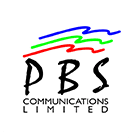It should not be that hard to decide?
If you have a favourite brand of machine that narrows the field. If you have a favoured supplier whose ethos you have heard about, or who you have used previously, that further points you to a manageable shortlist.
There are multiple considerations that then follow, each one of which can be the subject of much debate and discussion (speed of output, number of drawers, the user/operator LCD interface- just a few considerations).
The most misleading general descriptions of MFD devices on offer concerns the paper size that the machine can output. Ranges are often divided into ether “A3” or “A4” capable. This is a largely inappropriate headline categorisation.
PBS users print very little (in general) on A3 paper size. But, a machine that can print on A3 paper has numerous other features that make them appropriate acquisition choices even if no A3 output whatsoever is required:
- The machine is physically bigger (not huge), and the extra size over smaller machines is always helpful for the movement of paper through the machine, and for converting (fusing)toner to text. If a machine is very compact, paper handing is always more ‘fiddly’.
- The consumable components in machines that happen to have A3 size, are longer lasting, resulting in much lower running costs.
- The chassis and cassettes are more robust. You will always get five years usage life from a machine (that happens to have A3 size), unless print volumes are unusually high.
- Technical engineers working on machines (that happen to have A3 size) have the highest technical skills, and generally the most hardware repair expertise.
- The user interface, and application software connectivity- eg for scanning, is generally better able to integrate into wider end user networks.
The industry needs a better, more contemporary, headline description of its products.

